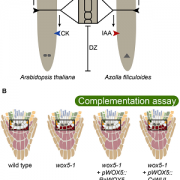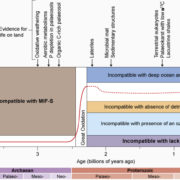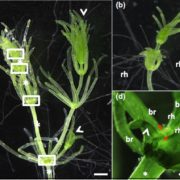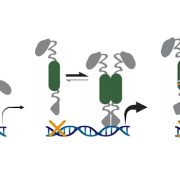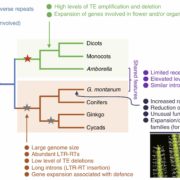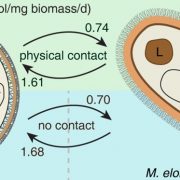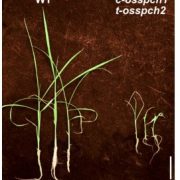Review: The origin and evolution of mycorrhizal symbioses (New Phytol)
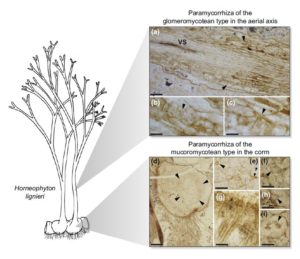 Many fungi are pathogens that kill or weaken their plant hosts. However, there are also many species that form beneficial relationships with plants, algae, and cyanobacteria. One of these mutualisms is the mycorrhizal association between a fungus and a plant root, where the fungus provides the plant with nitrogen or phosphorus in exchange for carbon or sugar. Although it is estimated that 85% of all plant species have a mycorrhizal association, the diversity and phylogenetic relationships of these incredible fungi has been relatively poorly studied. Strullu‐Derrien et al. review “the main phases of the evolution of mycorrhizal interactions from palaeontological, phylogenetic and genomic perspectives.” There is evidence of mycorrhizal mutualisms in plant fossils dating back at least 407 million years! In recent years new studies have identified several waves of evolution and diversification. Furthermore, some believe that these amazing fungi not only help shape the genome evolution and speciation of plants, but are also “active agents of environmental change” through their role in the carbon cycle. (Summary by Jason Stettler) New Phytol. 10.1111/nph.15076
Many fungi are pathogens that kill or weaken their plant hosts. However, there are also many species that form beneficial relationships with plants, algae, and cyanobacteria. One of these mutualisms is the mycorrhizal association between a fungus and a plant root, where the fungus provides the plant with nitrogen or phosphorus in exchange for carbon or sugar. Although it is estimated that 85% of all plant species have a mycorrhizal association, the diversity and phylogenetic relationships of these incredible fungi has been relatively poorly studied. Strullu‐Derrien et al. review “the main phases of the evolution of mycorrhizal interactions from palaeontological, phylogenetic and genomic perspectives.” There is evidence of mycorrhizal mutualisms in plant fossils dating back at least 407 million years! In recent years new studies have identified several waves of evolution and diversification. Furthermore, some believe that these amazing fungi not only help shape the genome evolution and speciation of plants, but are also “active agents of environmental change” through their role in the carbon cycle. (Summary by Jason Stettler) New Phytol. 10.1111/nph.15076


